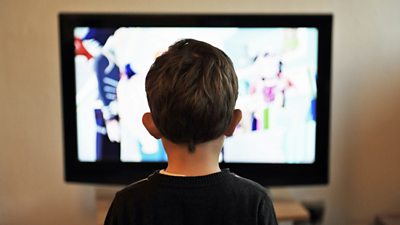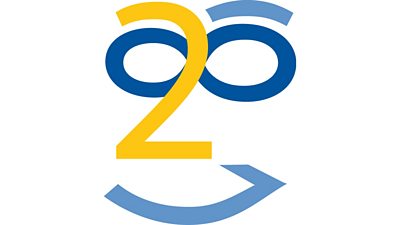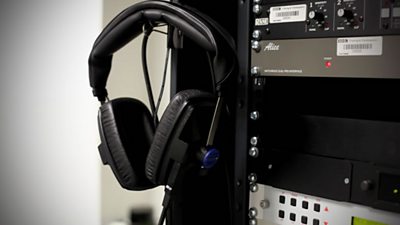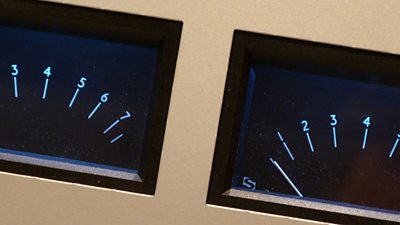Why is loudness such an issue for TV viewers?
Why is there such a difference between the loudness of programmes and adverts? R.128 is now in place to reduce the difference.
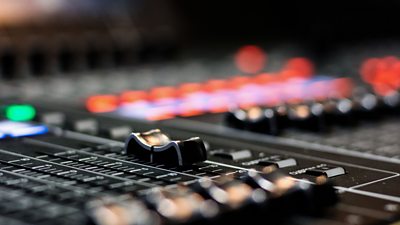
�鶹�� Academy
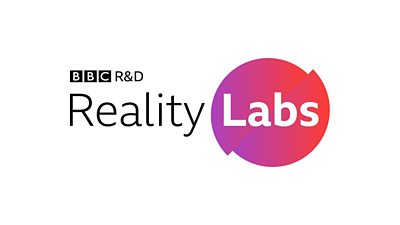 Brought to you by �鶹�� AcademyIn partnership with �鶹�� R&D Reality Labs
Brought to you by �鶹�� AcademyIn partnership with �鶹�� R&D Reality Labs
What's the problem?
Viewers complain about many aspects of television programmes, from lighting to make-up, political bias to factual accuracy. But one technical area is complained about more than any other: the sound.
Many complaints are about audibility, including background music being too loud, with loudness (explained below) accounting for the rest.
This guide explains what to be aware of and how to mitigate sound complaints when making programmes.
What is loudness?
Loudness is concerned with the difference in levels between and within programmes.
In terms of human hearing it is the perception of the energy contained in sound over any given time period.
Loudness is the averaging process carried out by the mechanics of the ear and the psychoacoustic processes of the brain. It typically takes between 300-400 milliseconds for a person to notice a change in loudness.
Try this test
Play the audio in this step. Which of these sets of pulses sound louder?
You will hear one set that repeats rapidly and another set that repeats at half the first rate.
The loudness levels should sound the same.
The first set is at half maximum output (amplitude), the second set is at maximum output.
But the total energy in both sets is the same.
The difference in the signal is known as the instantaneous peak amplitude.
Why should I worry about it?
The UK's Digital Production Partnership (DPP) recommends that all UK productions adhere to EBU R128 loudness regulations.
This is self-enforced by UK broadcasters.
R128 has been adopted as law in many EU countries and there is a similar law in the US called CALM (Commercial Advertisement Loudness Mitigation, A85).
To please viewers and sell programmes abroad, as well as to keep UK communications regulator Ofcom happy, programme makers need to follow these regulations.
The loudness-levelling paradigm affects all stages of an audio broadcast signal, from production to distribution and transmission.
From the EBU R128 guidelines
How to measure loudness
How do we objectively measure how loud an audio mix is?
LUFS are a unit of measurement known as Loudness Units relative to Full Scale.
They describe how loud a piece of audio is, while LU (Loudness Units) describe the difference in loudness between a piece of audio and the -23LUFS standard.
LUFS are referenced to 0 dBFS (Decibels relative to Full Scale), which is the highest valid audio signal that can be represented by a digital sample (all 24 bits at binary 1, as you can’t get larger than that).
The measurement uses a number of samples gathered together over a time period and then averaged.
Prior to the averaging process a filter modifies the frequency response so the meter approximates that of the ear.
How it works in practice
If you measure your audio and find it to be too loud (e.g. your loudness meter reads -19LUFS) then you can say it is 4LU too loud.
All audio mixers tend to be calibrated in dB so you can simply turn down the fader by 4dB. For digital mixers this is usually dBFS rather than dB, but the same principle applies.
By doing this you are bringing your programme closer to the standard average volume. If all programmes have the same average, then the volume shift at the programme junction will be less noticeable.
Loudness range
Below you'll find out about loudness range, which is the difference between the quietest and loudest parts of a programme. Differences in the loudness range are the source of 20 per cent of sound complaints.
Understanding the loudness range
For most TV programmes audio hovers around PPM 5 1/2 and PPM6. Some dramas use a wider signal range, dropping below PPM3 and peaking at PPM6. With loudness meters we can make use of the wide loudness range but we make sure all the programmes average at -23LUFS.
Loudness guide: The Voice waveform
Clearly mixed using a PPM and heavy compression, The Voice 2016 was a live studio audience show. The waveform shows very little dynamic for the whole two hours. It is too loud
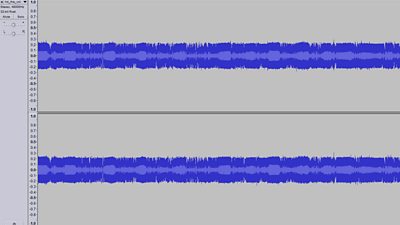
Loudness guide: The Voice measurement
Loudness measurement and correction software shows The Voice 2016 is too loud by 1.4 LUFS and its peaks are 7 dBTP below the allowable maximum, indicating a very compressed programme
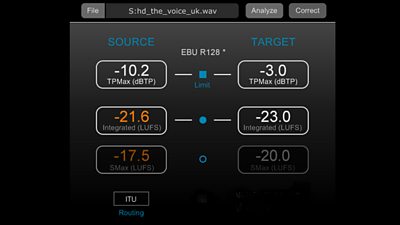
Loudness guide: Doctor Who waveform
The Doctor Who Christmas special is very dynamic with very high peaks and quieter sections between
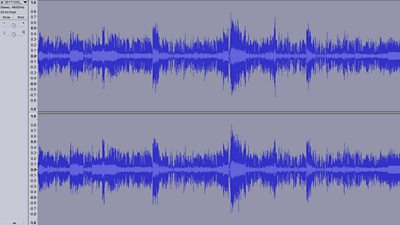
Loudness guide: Doctor Who measurement
The Doctor Who Christmas episode gets too loud, but only by 0.1 LU. However the peaks in the audio are 1.2 dBTP over the recommended DPP target. These are very fleeting peaks and any distortion caused may not be noticed
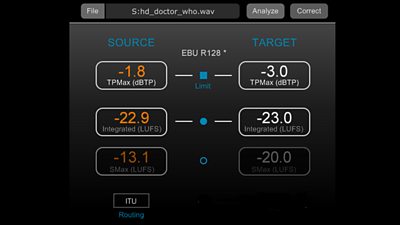
Loudness guide: Eastenders waveform
Eastenders is slightly compressed, but quiet sections spread throughout help achieve a balanced presentation
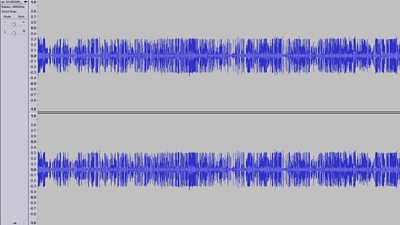
Loudness guide: Eastenders measurement
At -8 dBTP the Eastenders audio may not be making use of peaks in this episode, but it still is higher than PPM6 and the overall loudness is only 0.4 LU down on target
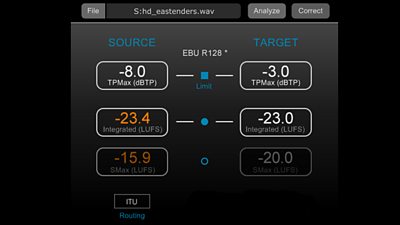
Loudness guide: Silent Witness waveform
Silent Witness uses dynamics to convey drama using the audio, with lots of very fast peaks and quiet passages and hardly any compression
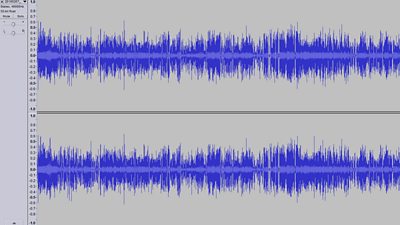
Loudness guide: Silent Witness measurement
Silent Witness - target loudness achieved and peaks contained
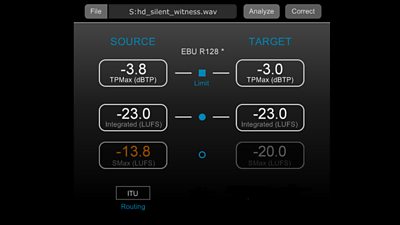
Loudness guide: Breakfast News waveform
Breakfast News, a three-hour-long live studio show with lots of live and recorded contributions. The shifts in level appear in blocks - these may be inserts from OBs, weather or pre-recorded pieces. There appear to be a lot of fast peaks
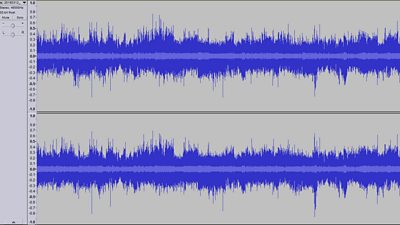
The peaks in Breakfast News are too high, but the loudness across the three hours is within 0.2 LU of the EBU target
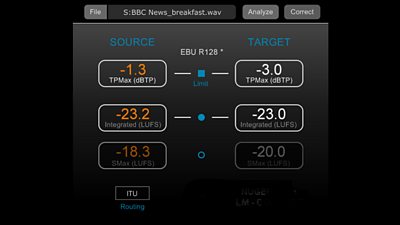
Audibility: Common complaints
Audibility accounts for 60 per cent of sound complaints.
Complaint 1: Dialogue
A lot of complaints centre on the dialogue being unintelligible.
This may be due to mumbling actors and poor pronunciation combined with unfamiliar accents.
Much of this can be solved at source if the sound is correctly captured using well-placed microphones in the first place.
Complaint 2: Background noise
Another production decision that can be a cause for complaint is how loud the captured voice sits within the entire production (including background music and sound effects).
You can use the technique below to check the audibility of a programme and that your mix sounds right.
Clear sound: Tips on recording TV drama
How to check programme audibility
Use the unfamiliar ears technique.
- Get someone unacquainted with the production to listen to the edit prior to final export to the delivery file
- They should listen to the programme on a television, not studio monitors. You're aiming for a listening level like that of the 'average living room'
- If after listening with these restrictions they confirm they can clearly hear everything, then export the programme file ready for delivery
